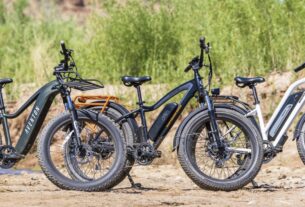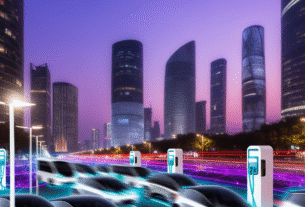# Discovering New Ideas in Electric Vehicle Technology
## Introduction
Electric vehicles (EVs) have quickly become a big deal. Nowadays, lots of people want EVs—from eco-friendly young adults to those who love fancy cars. But at the heart of this electrifying trend is innovation. As we zoom into the future of transportation, let’s explore the exciting advancements that make it possible. Buckle up, folks!
## Recent Breakthroughs in Battery Technology
### Solid-state Batteries
Remember when smartphones replaced landlines? Solid-state batteries are like that big change, but for EVs. Unlike the old batteries, which are big and heavy, these new ones are lighter and safer. They last longer and work better, too. Companies like Toyota and QuantumScape are leading the way, making EVs more awesome.
### Fast-Charging Capabilities
Do you remember how slow the internet was back in the day? Charging EVs used to take a long time, but now it’s much quicker. New charging stations can power up a car as fast as a short TV show. With ultra-fast chargers from companies like Ionity and Electrify America, it’s easier to charge on the go.
### Longer-Range Batteries
Battery makers are always working hard to improve how far cars can go on a single charge. By the time you finish reading this, there might be even more miles to drive on a charge than before. Companies like Tesla and Lucid Motors are already showing off cars that can travel long distances, making the road ahead seem endless.
## Advancements in Electric Powertrains
### In-Wheel Motors
In-wheel motors let engineers design super cool cars. They make the vehicle lighter and easier to handle. And with more space inside, there’s room for lots of things, like a mountain of drive-thru fries.
### Improved Energy Efficiency
New EVs are designed to be super sleek and aerodynamic. They save energy like a race car but are better for the planet. Cars like the Hyundai Kona, Tesla Model 3, and Jaguar I-Pace are leading the way in energy efficiency.
### Enhanced Torque and Acceleration
Electric motors give cars super-fast acceleration. It’s like eating a spicy pepper—exciting and powerful! Cars like the Rivian R1T and the Tesla Roadster are setting records with lightning-fast speeds.
## Developments in Autonomous Driving Features
### Integration with EVs
Self-driving features in EVs are like peanut butter and jelly—they go perfectly together. With smart computers and sensors, EVs can drive safely and avoid accidents. Companies like Waymo and Tesla are pushing this technology forward.
### Advanced Driver-Assistance Systems (ADAS)
ADAS helps drivers stay safe by keeping the car in its lane and braking automatically when needed. It’s like having a friend who’s always watching the road. Thanks to ADAS, more people are choosing high-tech cars.
### Communication Between Vehicles and Infrastructure (V2X)
Vehicles can now share important information with traffic lights and other cars, helping them to drive smoothly and avoid jams. V2X technology makes sure traffic is efficient and safe, building smarter cities.
## Sustainability and Environmental Impact
### Eco-friendly Manufacturing Processes
It’s important to make cars in a way that’s gentle on the Earth. Many carmakers use sustainable practices in their factories, making sure they don’t harm our planet. Companies like BMW and Tesla are leaders in this movement.
### Recycling and Second-Life Batteries
Today’s EV industry focuses on recycling old batteries and giving them new purposes. Batteries can be reused in other vehicles or as energy storage. This helps reduce waste and protects nature.
### EVs in Renewable Energy Grids
EVs are key players in the renewable energy system. They can store energy and send it back when needed, helping to balance power supply and demand. Projects like Renault’s smart-charging solutions are stepping up to this challenge.
## Challenges and Limitations
### Infrastructure Development
We need more charging stations for EVs to become truly mainstream. Some places still lack the necessary charging network. However, companies like ChargePoint are working to fill in these gaps.
### Consumer Perception and Adoption
People need to understand that EVs are not just fancy gadgets but are practical and useful. Education campaigns help break down misconceptions and show the real benefits of EVs.
### Regulatory and Policy Issues
Government rules can slow down innovation. To help EV technology grow, regulations need to be clear and supportive. Governments worldwide need to work on creating policies that support safe and speedy progress.
## Future Trends and Directions
### Wireless Charging Technology
Imagine a driveway that charges your car when you park—it’s becoming possible! Companies like WiTricity are working on wireless charging solutions that feel like magic.
### Vehicle-to-Grid (V2G) Technology
V2G technology allows EVs to share their stored energy with the grid during peak times. This not only helps stabilize power but also lets car owners earn money by selling energy back to the grid.
### Integration with Smart City Ecosystems
EVs will soon be part of smart cities, connecting with wireless networks and each other. This integration will make cities more efficient and environmentally friendly.
## Conclusion
As we finish our journey through the innovations in electric vehicle technology, it’s clear how imagination and hard work are changing how we move. These advancements are paving the way for an exciting future.
Exploring this electric avenue is not just smart and green but also filled with joyrides of inspiration, leading society toward a brighter, more sustainable tomorrow. So, dear readers, enjoy the thrill of innovation because the best part is not what’s behind you, but what lies ahead.




